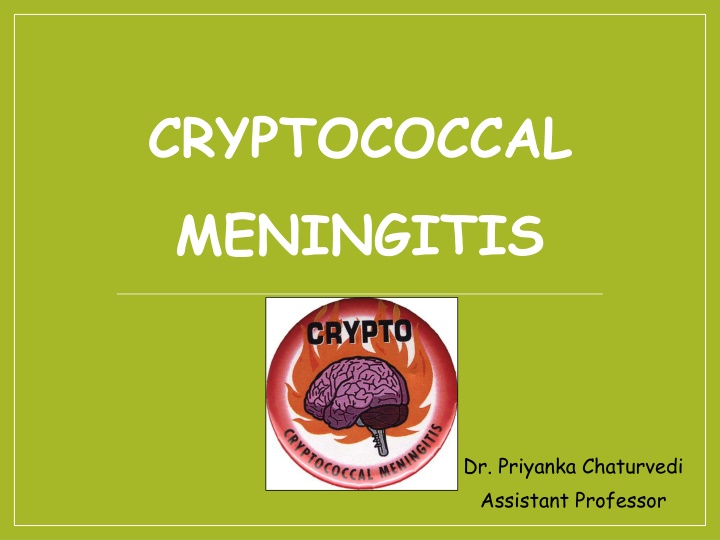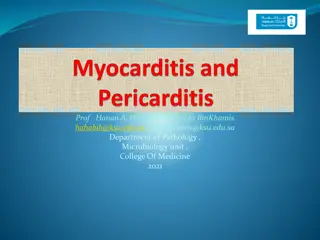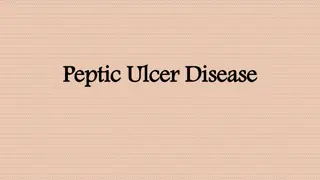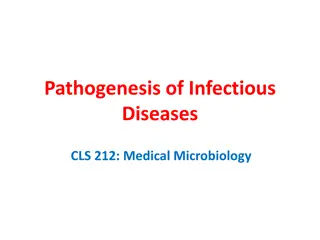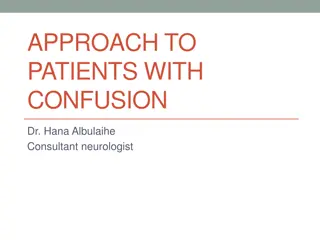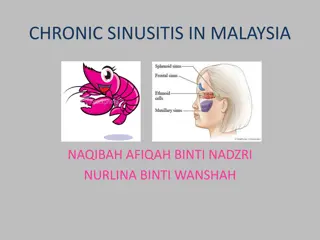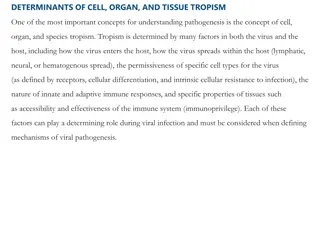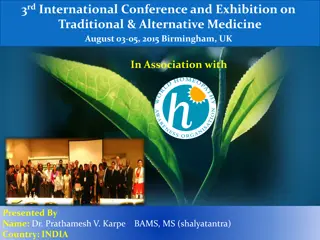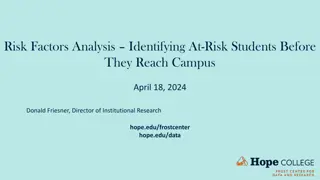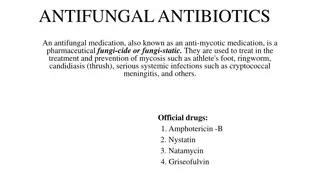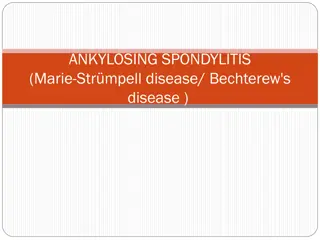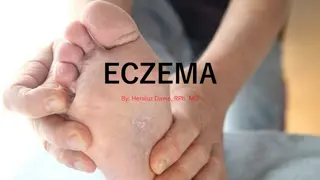Cryptococcal Meningitis: Causes, Pathogenesis, and Risk Factors
Cryptococcal meningitis is caused by Cryptococcus neoformans, a yeast that can lead to fatal meningitis in immunocompromised individuals. This type of fungal infection can be transmitted through inhalation and can spread to the central nervous system, particularly affecting those with advanced HIV infection or on immunosuppressive therapy. Understanding the species, serotypes, and virulence factors involved is crucial in managing and preventing the disease.
Download Presentation

Please find below an Image/Link to download the presentation.
The content on the website is provided AS IS for your information and personal use only. It may not be sold, licensed, or shared on other websites without obtaining consent from the author.If you encounter any issues during the download, it is possible that the publisher has removed the file from their server.
You are allowed to download the files provided on this website for personal or commercial use, subject to the condition that they are used lawfully. All files are the property of their respective owners.
The content on the website is provided AS IS for your information and personal use only. It may not be sold, licensed, or shared on other websites without obtaining consent from the author.
E N D
Presentation Transcript
CRYPTOCOCCAL MENINGITIS Dr. Priyanka Chaturvedi Assistant Professor
FUNGAL INFECTIONS OF CNS Primary CNS pathogen: Cryptococcus neoformans Secondary CNS pathogen: Agents of systemic Histoplasma capsulatum and Coccidioides immitis Agents of subcutaneous Pseudallescheria boydii and Cladophialophora bantiana Opportunistic fungal agents : Candida albicans, Aspergillus species and Mucor (rhinocereberal mucromycosis) mycoses: Blastomyces dermatitidis, mycoses: Sporothrix schenckii,
CRYPTOCOCCAL MENINGITIS
CRYPTOCOCCAL MENINGITIS Cryptococcal meningitis is caused by a Cryptococcus neoformans It is a capsulated yeast Capable of producing fatal meningitis in immunocompromised individuals like PLHIV/AIDS.
Species and Serotypes Two species: C. neoformans and 1. 2. C. gattii Four serotypes A, B, C and D. Two varieties C. neoformans var. grubii ( serotype A) 1. 2. C. neoformans var. neoformans ( serotype D)
Pathogenesis Mode of Infection: By inhalation of aerosolized forms of Cryptococcus Immunocompetent individuals - defense mechanisms limit the infection. Immunocompromised individuals - Pulmonary infection - dissemination through blood- CNS
Pathogenesis CNS spread: Cross blood-brain barrier - migrate directly across the endothelium or carried inside the macrophages.
Pathogenesis Virulence factors POLYSACCHARIDE CAPSULE Antiphagocytic Inhibits the host s local immune responses Ability OXIDASE to make melanin by enzyme PHENYL Other enzymes PHOSPHOLIPASE AND UREASE
Pathogenesis Risk factors : Patients with advanced HIV infection with CD4 T cell counts <200/ L Patients with hematologic malignancies Transplant recipients Patients on immunosuppressive or steroid therapy
Clinical Manifestations Pulmonary presentation cryptococcosis: Most common Cryptococcal meningitis: Chronic meningitis, with headache, fever, sensory and memory loss, cranial nerve paresis and loss of vision (due to optic nerve involvement) Skin lesions Osteolytic bone lesions
Epidemiology Geographical distribution: C. neoformans var. grubii strains -- Worldwide C. neoformans var. neoformans strains -- Europe C. gattii is confined to tropics Habitat: C. neoformans soils contaminated with avian excreta, pigeon droppings, Eucalytus tree..
Laboratory Diagnosis Specimens CSF
Direct Detection Methods Gram stain Gram-positive round budding yeast cells with no pseudohyphae.
Direct Detection Methods Negative staining Modified India ink stain and Nigrosin stain - demonstrate the capsule
Direct Detection Methods Mucicarmine stain: Stains the carminophilic cell wall of C. neoformans Masson-Fontana stain: Demonstrates the production of melanin Alcian blue stain to demonstrate the capsule.
Culture SDA incubated at 37 C without antibiotics Colonies - Mucoid creamy white colony
Biochemical Reactions Urease test Niger seed agar and Bird seed agar Urease test is positive Assimilation of inositol and nitrate - + Growth at 37oC Mouse pathogenicity test
Phenoloxidase Test: Dark brown colonies of Cr.neoformans on bird seed agar
Phenoloxidase Test: Production of Dark brown/ Black colonies of Cryptococcus neoformans on medium containing Diphenolic compound (Birdseed agar) due to conversion of diphenolic compound to melanin by its Phenoloxidase enzyme.
Sugar Fermentation This test involves liquid media supplemented with different carbohydrates, a color indicator to assess pH change to measure acid formation and inverted Durham tube for gas production.
Sugar Fermentation Species Glucose Sucrose Lactose Maltose Cr.neoformans - - - -
Sugar assimilation test This test checks the ability of a yeast to utilize a specific carbohydrate(sugar) as a source of nutrition, in a carbohydrate free medium aerobically.
Sugar assimilation of Cryptococcus Species Glu Mal Suc Lac Gal Mel Cel Ino Xyl Raf Tre Dul + + + - + - + + + + + + C. neofor mans
Nitrate Assimilation Test Performed on YEAST CARBON BASE agar. Used in identification of Cryptococcus species.
Serological Test: CALAS CRYPTOCCUS ANTIGEN LATEX AGGLUTINATION SYSTEM Capsular detection: From CSF or serum agglutination test Antigen by latex
Serological Diagnosis NO AGGLUTINATION AGGLUTINATION PRESENT
Cryptococcus Laboratory Diagnosis Demonstration of Capsule on India ink/ Nigrosin stain Narrow neck budding with no pseudohyphae or hyphae on microscopy Mucoid, cream to buff colored colonies on SDA Brown to Black color colonies on Bird seed / Caffeic acid agar Urease test positive, Nitrate assimilation positive, Inositol assimilation, growth at 37 C. CALAS
